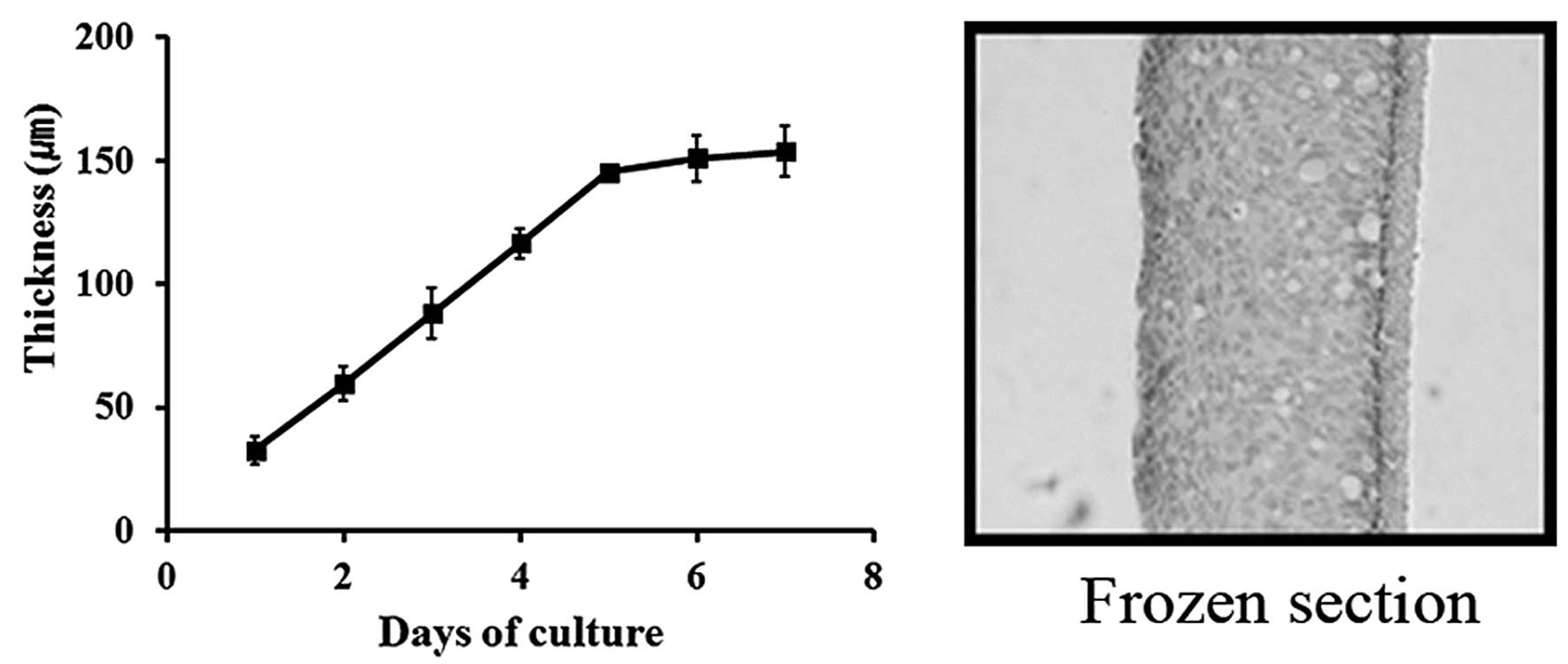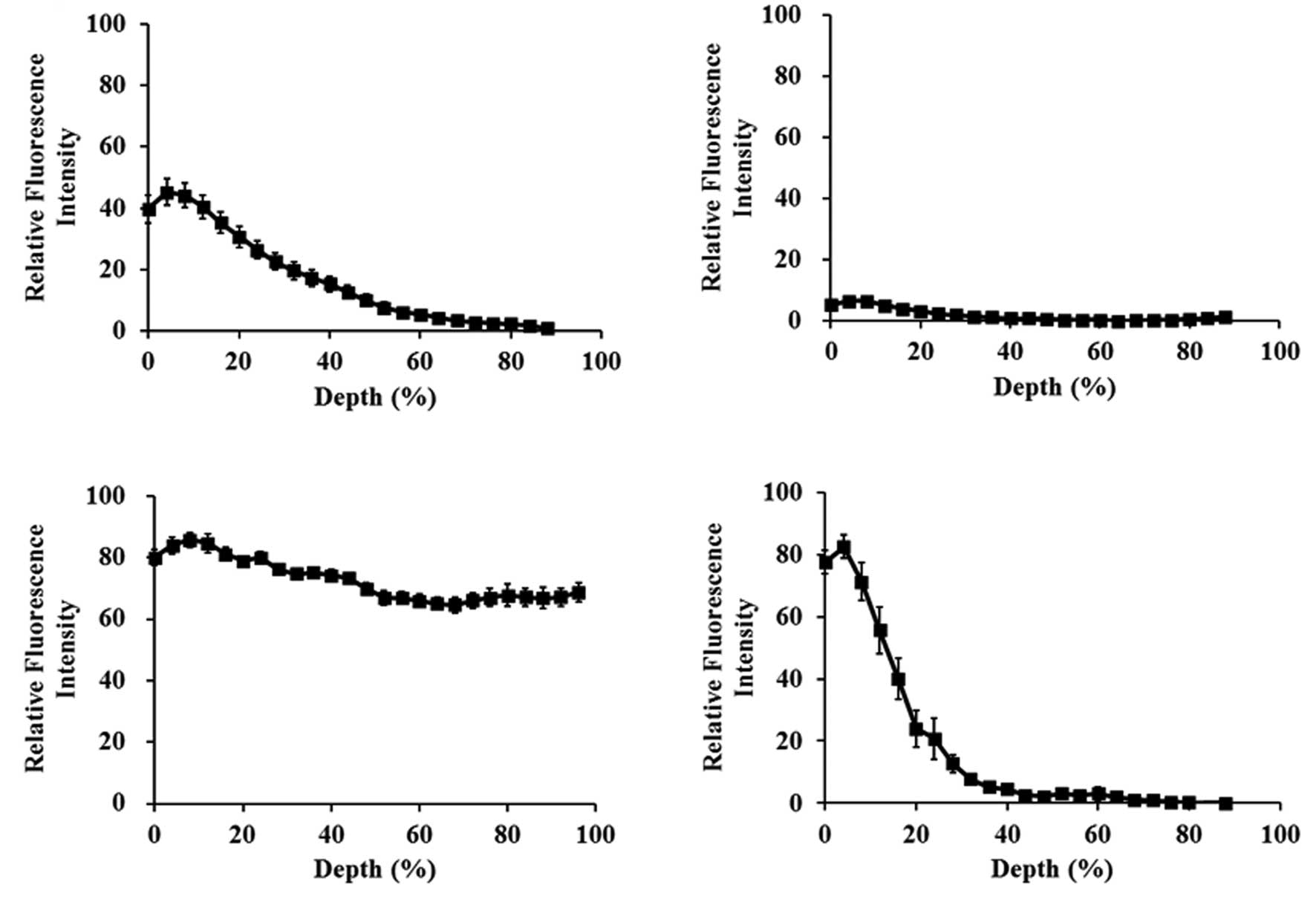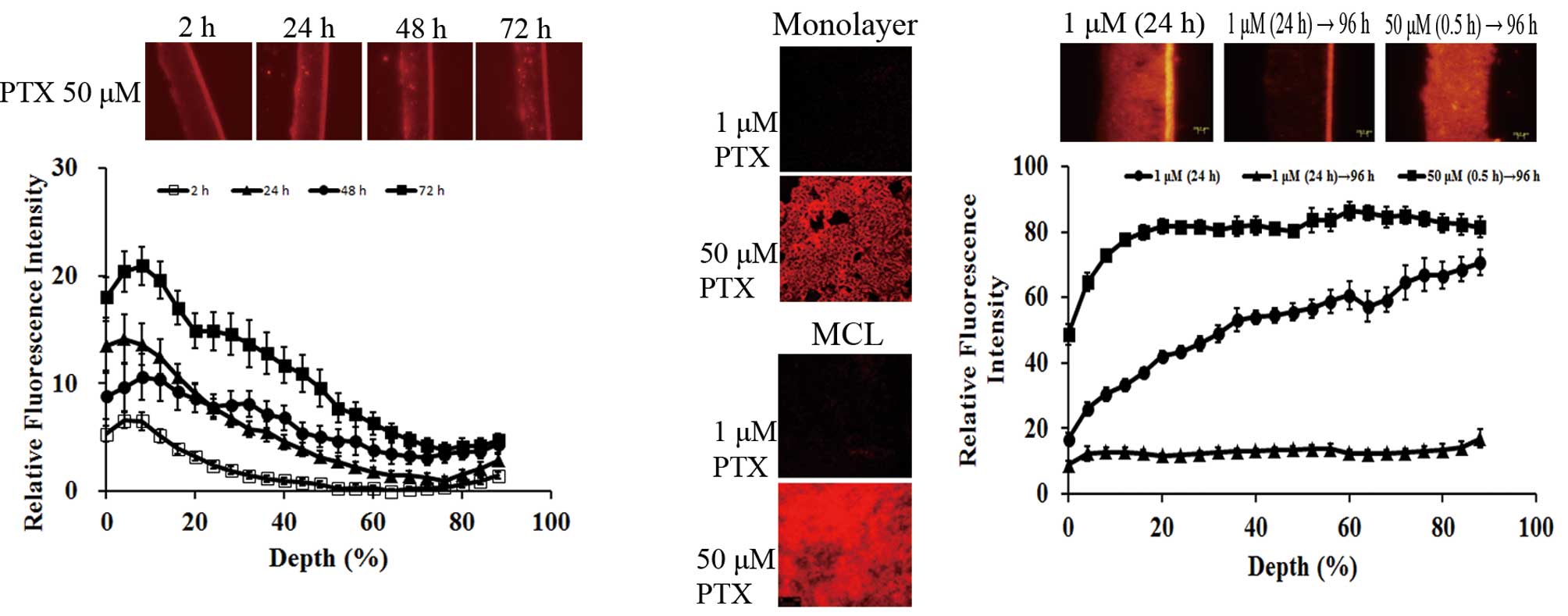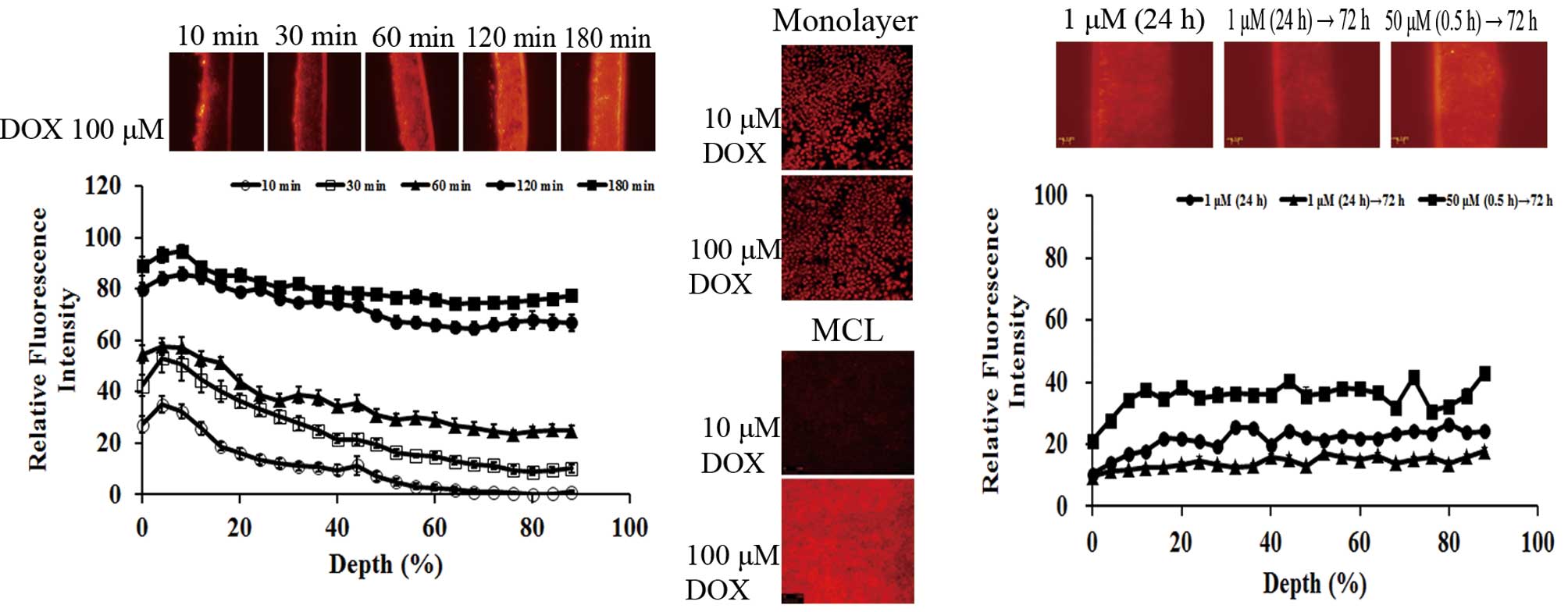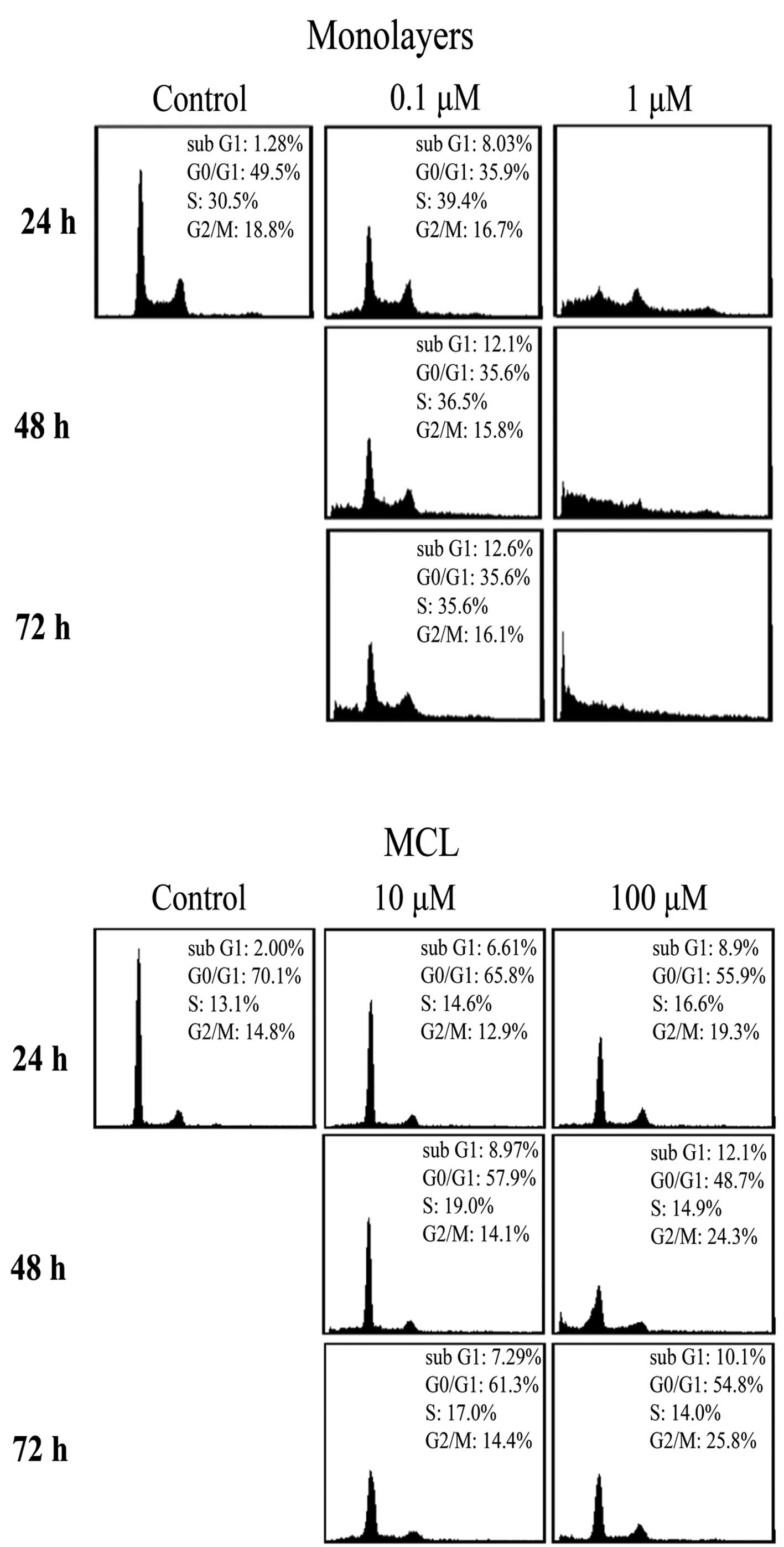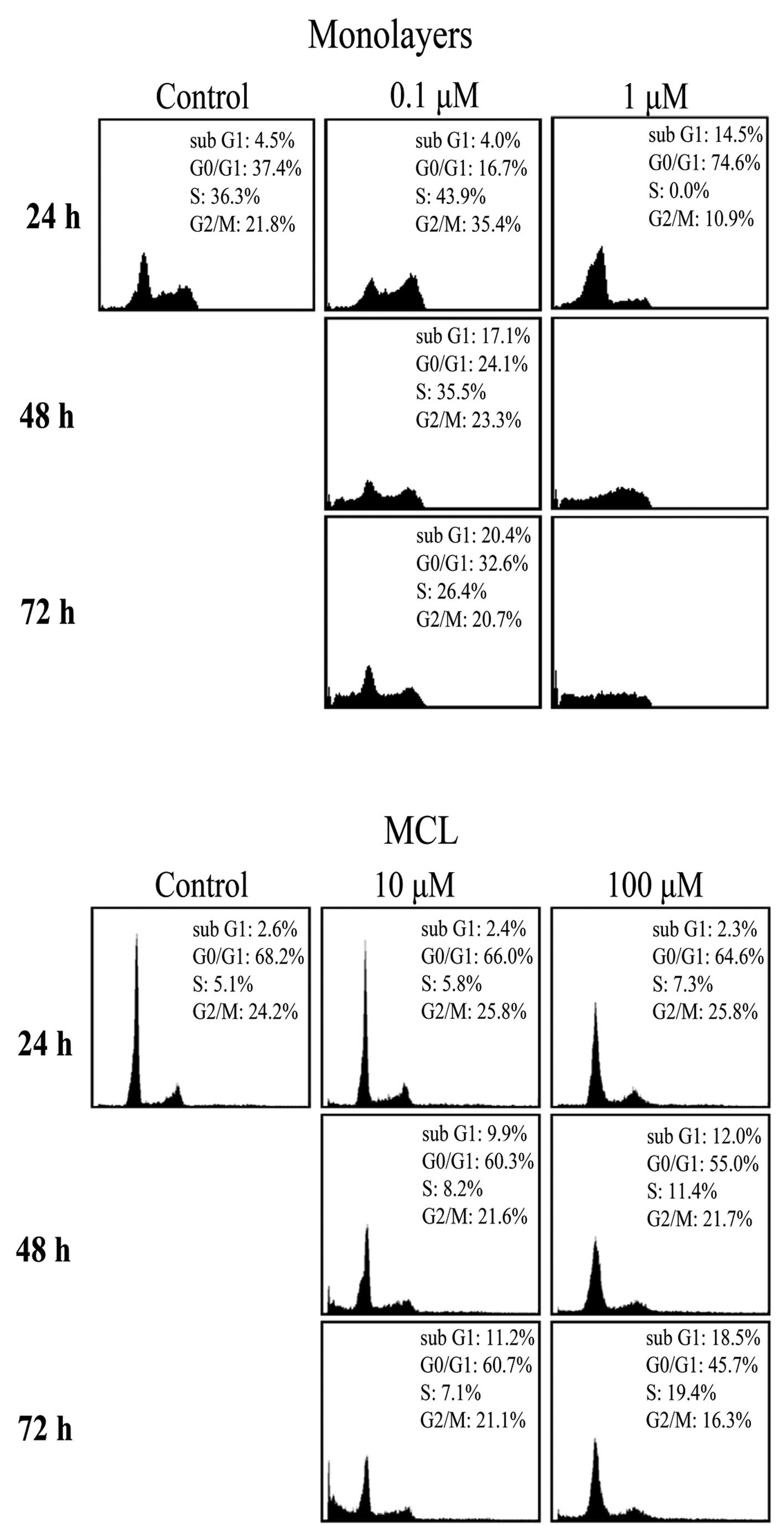|
1
|
Trédan O, Galmarini CM, Patel K and
Tannock IF: Drug resistance and the solid tumor microenvironment. J
Natl Cancer Inst. 99:1441–1454. 2007.
|
|
2
|
Primeau AJ, Rendon A, Hedley D, Lilge L
and Tannock IF: The distribution of the anticancer drug doxorubicin
in relation to blood vessels in solid tumors. Clin Cancer Res.
11:8782–8788. 2005. View Article : Google Scholar : PubMed/NCBI
|
|
3
|
Minchinton AI and Tannock IF: Drug
penetration in solid tumours. Nat Rev Cancer. 6:583–592. 2006.
View Article : Google Scholar : PubMed/NCBI
|
|
4
|
Xia Y and Lee K: Targeting multidrug
resistance with small molecules for cancer therapy. Biomol Therap.
18:375–385. 2010. View Article : Google Scholar
|
|
5
|
Rowinsky EK: Clinical pharmacology of
Taxol. J Natl Cancer Inst Monogr. 15:25–37. 1993.PubMed/NCBI
|
|
6
|
Kuh HJ, Jang SH, Wientjes MG, Weaver JR
and Au JL: Determinants of paclitaxel penetration and accumulation
in human solid tumor. J Pharmacol Exp Ther. 290:871–880.
1999.PubMed/NCBI
|
|
7
|
Nicholson KM, Bibby MC and Phillips RM:
Influence of drug exposure parameters on the activity of paclitaxel
in multicellular spheroids. Eur J Cancer. 13:1291–1298. 1997.
View Article : Google Scholar : PubMed/NCBI
|
|
8
|
Martin C, Walker J, Rothnie A and
Callaghan R: The expression of P-glycoprotein does influence the
distribution of novel fluorescent compounds in solid tumour models.
Br J Cancer. 89:1581–1589. 2003. View Article : Google Scholar : PubMed/NCBI
|
|
9
|
Grantab R, Sivananthan S and Tannock IF:
The penetration of anticancer drugs through tumor tissue as a
function of cellular adhesion and packing density of tumor cells.
Cancer Res. 66:1033–1039. 2006. View Article : Google Scholar : PubMed/NCBI
|
|
10
|
Outomuro D, Grana DR, Azzato F and Milei
J: Adriamycin-induced myocardial toxicity: new solutions for an old
problem? Int J Cardiol. 117:6–15. 2007. View Article : Google Scholar : PubMed/NCBI
|
|
11
|
Patel KJ and Tannock IF: The influence of
P-glycoprotein expression and its inhibitors on the distribution of
doxorubicin in breast tumors. BMC Cancer. 9:3562009. View Article : Google Scholar : PubMed/NCBI
|
|
12
|
Lee CM and Tannock IF: Inhibition of
endosomal sequestration of basic anticancer drugs: influence on
cytotoxicity and tissue penetration. Br J Cancer. 94:863–869. 2006.
View Article : Google Scholar : PubMed/NCBI
|
|
13
|
Hicks KO, Ohms SJ, van Zijl PL, Denny WA,
Hunter PJ and Wilson WR: An experimental and mathematical model for
the extravascular transport of a DNA intercalator in tumours. Br J
Cancer. 76:894–903. 1997. View Article : Google Scholar : PubMed/NCBI
|
|
14
|
Hicks KO, Fleming Y, Siim BG, Koch CJ and
Wilson WR: Extravascular diffusion of tirapazamine: effect of
metabolic consumption assessed using the multicellular layer model.
Int J Radiat Oncol Biol Phys. 42:641–649. 1998. View Article : Google Scholar : PubMed/NCBI
|
|
15
|
Hicks KO, Pruijn FB, Baguley BC and Wilson
WR: Extravascular transport of the DNA intercalator and
topoisomerase poison
N-[2-(dimethylamino)ethyl]acridine-4-carboxamide (DACA): diffusion
and metabolism in multicellular layers of tumor cells. J Pharmacol
Exp Ther. 297:1088–1098. 2001.PubMed/NCBI
|
|
16
|
Hicks KO, Pruijn FB, Sturman JR, Denny WA
and Wilson WR: Multicellular resistance to tirapazamine is due to
restricted extravascular transport: a
pharmacokinetic/pharmacodynamic study in HT29 multicellular layer
cultures. Cancer Res. 63:5970–5977. 2003.
|
|
17
|
Sutherland RM and Durand RE: Radiation
response of multicell spheroids: an in vitro tumour model. Curr Top
Radiat Res Q. 11:87–139. 1976.PubMed/NCBI
|
|
18
|
Sutherland RM: Cell and environment
interactions in tumor microregions: the multicell spheroid model.
Science. 240:177–184. 1988. View Article : Google Scholar : PubMed/NCBI
|
|
19
|
Tunggal JK, Melo T, Ballinger JR and
Tannock IF: The influence of expression of P-glycoprotein on the
penetration of anticancer drugs through multicellular layers. Int J
Cancer. 86:101–107. 2000. View Article : Google Scholar : PubMed/NCBI
|
|
20
|
Tannock IF, Lee CM, Tunggal JK, Cowan DS
and Egorin MJ: Limited penetration of anticancer drugs through
tumor tissue: a potential cause of resistance of solid tumors to
chemotherapy. Clin Cancer Res. 8:878–884. 2002.PubMed/NCBI
|
|
21
|
Jang SH, Wientjes MG and Au JL:
Enhancement of paclitaxel delivery to solid tumors by
apoptosis-inducing pretreatment: effect of treatment schedule. J
Pharmacol Exp Ther. 296:1035–1042. 2001.PubMed/NCBI
|
|
22
|
Al-Abd AM, Lee JH, Kim SY, Kun N and Kuh
HJ: Novel application of multicellular layers culture for in situ
evaluation of cytotoxicity and penetration of paclitaxel. Cancer
Sci. 99:423–431. 2008. View Article : Google Scholar : PubMed/NCBI
|
|
23
|
West GW, Weichselbaum R and Little JB:
Limited penetration of methotrexate into human osteosarcoma
spheroids as a proposed model for solid tumor resistance to
adjuvant chemotherapy. Cancer Res. 40:3665–3668. 1980.
|
|
24
|
Nederman T and Carlsson J: Penetration and
binding of vinblastine and 5-fluorouracil in cellular spheroids.
Cancer Chemother Pharmacol. 13:131–135. 1984.PubMed/NCBI
|
|
25
|
Durand RE: Distribution and activity of
antineoplastic drugs in a tumor model. J Natl Cancer Inst.
81:146–152. 1989. View Article : Google Scholar : PubMed/NCBI
|
|
26
|
Tunggal JK, Cowan DS, Shaikh H and Tannock
IF: Penetration of anticancer drugs through solid tissue: a factor
that limits the effectiveness of chemotherapy for solid tumors.
Clin Cancer Res. 5:1583–1586. 1999.PubMed/NCBI
|
|
27
|
Hicks KO, Pruijn FB, Secomb TW, Hay MP,
Hsu R, Brown JM, Denny WA, Dewhirst MW and Wilson WR: Use of
three-dimensional tissue cultures to model extravascular transport
and predict in vivo activity of hypoxia-targeted anticancer drugs.
J Natl Cancer Inst. 98:1118–1128. 2006. View Article : Google Scholar : PubMed/NCBI
|
|
28
|
Kyle AH, Huxham LA, Yeoman DM and
Minchinton AI: Limited tissue penetration of taxanes: a mechanism
for resistance in solid tumors. Clin Cancer Res. 13:2804–2810.
2007. View Article : Google Scholar : PubMed/NCBI
|
|
29
|
Wilson WR and Hicks KO: Measurement of
extravascular drug diffusion in multicellular layers. Br J Cancer.
79:1623–1626. 1999.PubMed/NCBI
|
|
30
|
Wijffels KI, Kaanders JH, Rijken PF,
Bussink J, van den Hoogen FJ, Marres HA, de Wilde PC, Raleigh JA
and van der Kogel AJ: Vascular architecture and hypoxic profiles in
human head and neck squamous cell carcinomas. Br J Cancer.
83:674–683. 2000. View Article : Google Scholar : PubMed/NCBI
|
|
31
|
Huxham LA, Kyle AH, Baker JH, Nykilchuk LK
and Minchinton AI: Microregional effects of gemcitabine in HCT-116
xenografts. Cancer Res. 64:6537–6541. 2004. View Article : Google Scholar : PubMed/NCBI
|
|
32
|
Guy R, Scott Z, Sloboda R and Nicolaou K:
Fluorescent toxoids. Chem Biol. 3:1021–1031. 1996. View Article : Google Scholar
|
|
33
|
Baloglu E, Kingston DG, Patel P,
Chatterjee SK and Bane SL: Synthesis and microtubule binding of
fluorescent paclitaxel derivatives. Bioorg Med Chem Lett.
11:2249–2252. 2001. View Article : Google Scholar : PubMed/NCBI
|
|
34
|
Mellor HR, Ferguson DJ and Callaghan R: A
model of quiescent tumour microregions for evaluating multicellular
resistance to chemotherapeutic drugs. Br J Cancer. 93:302–309.
2005. View Article : Google Scholar : PubMed/NCBI
|
|
35
|
Olive PL and Durand RE: Drug and radiation
resistance in spheroids: cell contact and kinetics. Cancer
Metastasis Rev. 13:121–138. 1994. View Article : Google Scholar : PubMed/NCBI
|
|
36
|
Croix BS, Rak JW, Kapitain S, Sheehan C,
Graham CH and Kerbel RS: Reversal by hyaluronidase of
adhesion-dependent multicellular drug resistance in mammary
carcinoma cells. J Natl Cancer Inst. 88:1285–1296. 1996. View Article : Google Scholar : PubMed/NCBI
|
|
37
|
Barbone D, Ryan JA, Kolhatkar N, Chacko
AD, Jablons DM, Sugarbaker DJ, Bueno R, Letai AG, Coussens LM,
Fennell DA and Broaddus VC: The Bcl-2 repertoire of mesothelioma
spheroids underlies acquired apoptotic multicellular resistance.
Cell Death Dis. 2:e1742011. View Article : Google Scholar : PubMed/NCBI
|
|
38
|
Lee SY, Jeong EK, Jeon HM, Kim CH and Kang
HS: Implication of necrosis-linked p53 aggregation in acquired
apoptotic resistance to 5-FU in MCF-7 multicellular tumour
spheroids. Oncol Rep. 24:73–79. 2010.PubMed/NCBI
|
|
39
|
Jang SH, Wientjes MG and Au JL:
Determinants of paclitaxel uptake, accumulation and retention in
solid tumors. Invest New Drugs. 19:113–123. 2001. View Article : Google Scholar : PubMed/NCBI
|















